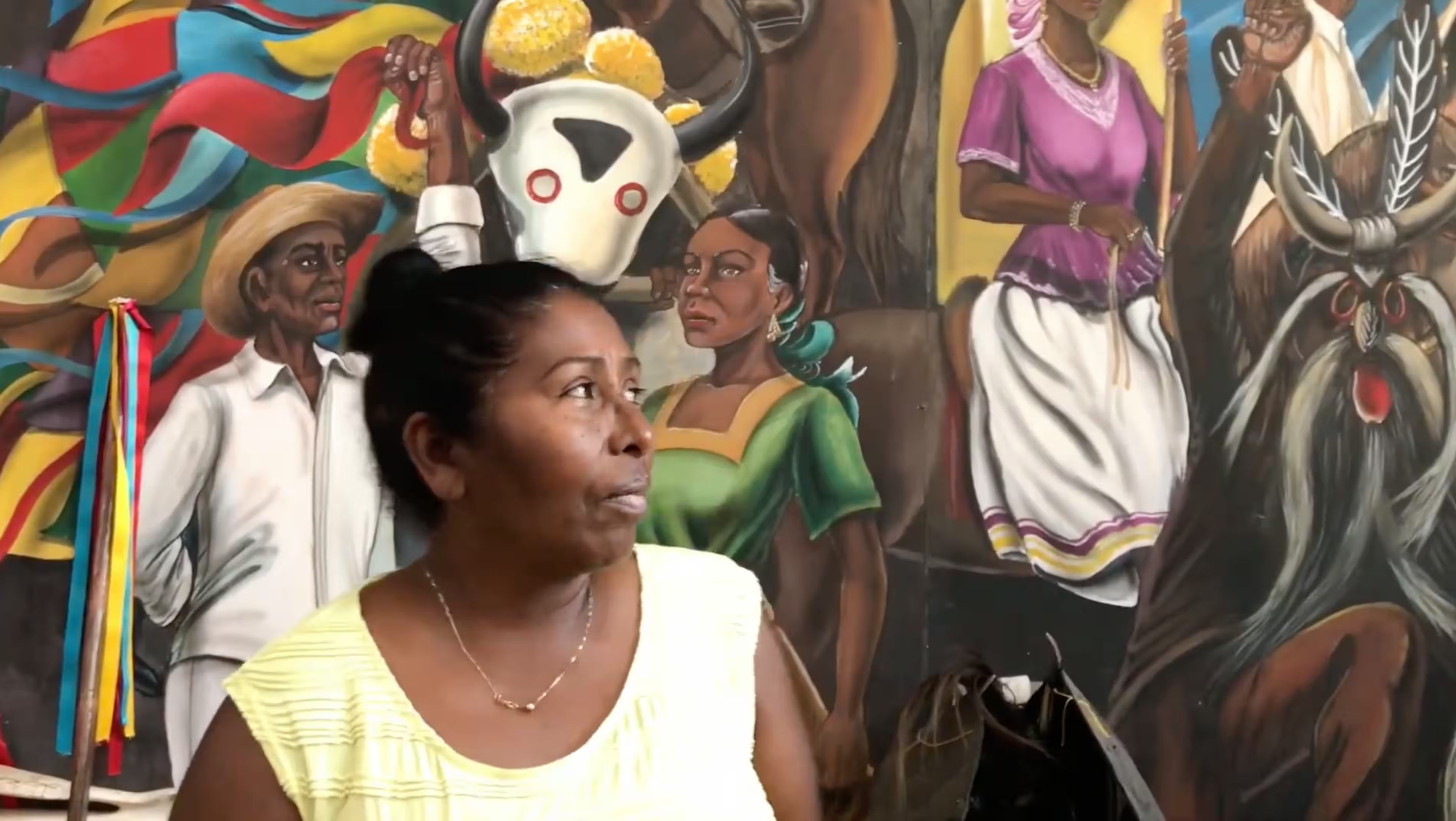Four centuries have passed since the arrival of African slaves on Mexican shores, yet the legacy of Mexico’s oldest Black community endures, a testament to resilience in the face of adversity. Nestled along the Pacific coast, the village of Tecoyame stands as a living chronicle of Afro-Mexican heritage, its history intertwined with tales of struggle and survival.
The sun casts a radiant glow over Mama Cointa’s modest adobe abode, where the air is filled with laughter and the aroma of traditional Afro-Mexican cuisine.
It’s a celebration of life, a jubilant gathering to commemorate Mama Cointa’s remarkable journey as she turns 101.
Surrounded by loved ones, Mama Cointa – the revered matriarch of Tecoyame – holds a bouquet of vibrant blooms, symbolizing her resilience and vibrant spirit that permeates her home. Her son, Don Amado, warmly welcomes guests, his eyes reflecting both pride and concern for the future of their ancestral home.
“Our home stands as a testament to our heritage, but it’s also a fragile relic of the past,” Amado shares, his voice filled with worry. “We lack the support and resources to preserve it amidst the changing climate.”

Mama Cointa’s abode – affectionately known as “El Redondo” – stands as a symbol of Afro-Mexican legacy in the Costa Chica region, a land steeped in history and tradition.
Built with mud and thatched palm leaves by African slaves centuries ago, these homes have been sanctuaries for generations, preserving a cultural heritage that’s deeply rooted in resilience and perseverance.
Yet, as droughts intensify and the land grows more unforgiving, the foundation of Mama Cointa’s home is threatened. The once-lush soil is now parched and cracked, unable to absorb the torrents of rain that accompany Mexico’s changing climate.
“El Redondo is more than just walls and a roof; it’s a testament to our identity,” explains Victor Guzman, a local historian. “It embodies the rich tapestry of our African heritage, a heritage that’s woven into every aspect of our lives.”
Beyond the quaint village of Tecoyame lies Cuajinicuilapa, a bustling city often hailed as Mexico’s “black pearl.” Nestled along the Pacific coast, Cuajinicuilapa pulsates with a vitality that’s as unique as its inhabitants.
Here, Afro-Mexican culture thrives, infused with the fiery flavors of traditional cuisine and the rhythmic beats of ancient dances.
With its tantalizing seafood and fiery dishes, Cuajinicuilapa boasts a culinary heritage that’s both diverse and flavorful. From spicy fish stews to savory corn pancakes, every dish tells a story of resilience and adaptation, a fusion of African and Indigenous flavors that are distinctly Afro-Mexican.
But amidst the vibrant tapestry of culture and tradition lies a poignant tale of struggle and resilience. Abad Campos Rodriguez, a renowned dance teacher, laments the dwindling number of teachers passing down the art of the “Danza de los Diablos” to future generations.
“Our traditions are at risk of fading away,” he confesses, his eyes betraying a sense of urgency. “Without support and recognition, our cultural heritage hangs in the balance.”
Indeed, the road to recognition has been fraught with obstacles. Despite recent strides in acknowledging Afro-Mexican identity, the community still grapples with social and economic marginalization.
Museums stand neglected, and cultural institutions teeter on the brink of collapse, emblematic of a broader struggle for recognition and support.
Angelica Sorrosa, manager of the Afro-Mexican museum, echoes the sentiment of many in the community. “We remain invisible, relegated to the margins of society,” she laments. “But we refuse to be silenced.”

As Mexico gears up for presidential elections, there’s a ray of hope on the horizon. Communities like Cuajinicuilapa are optimistic that the new political leadership will usher in a new era of recognition and support for Afro-Mexican culture.
“We dream of a future where our children have the same opportunities as anyone else,” shares Mijane Jimenez Salinas, president of Mano Amiga de la Costa Chica. “A future where our heritage is celebrated, not marginalized.”
With each passing year, the resilience of Mama Cointa and her community serves as a beacon of hope, a testament to the enduring spirit of Afro-Mexican culture. As they stand united in celebration, they reaffirm their commitment to preserving their heritage and paving the way for future generations to thrive.




